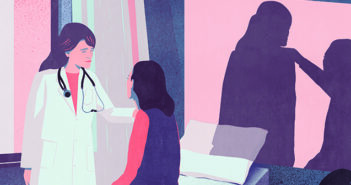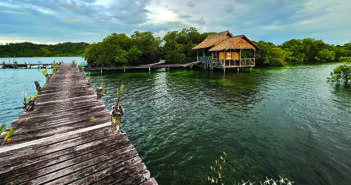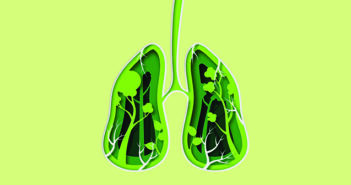Through research, clinical care, and teaching, the Pediatric Anxiety Research Center has defined the standard of care for OCD in kids.
The founders of the Pediatric Anxiety Research Center—an internationally renowned center focused on childhood anxiety and obsessive-compulsive disorder—started their work together quite by accident.
In 1999, Henrietta Leonard, MD, was a pediatric OCD expert who had recently joined Brown’s faculty from the National Institutes of Health; Jennifer Freeman F’01, PhD, was a Brown trainee planning to enter a clinical postdoctoral fellowship—until the funding collapsed. At the last moment, with no particular background in OCD, Freeman found herself in a position as Leonard’s postdoc.
“Henrietta Leonard was a force to be reckoned with, someone who cared deeply about kids and about research,” Freeman says. “Her arrival here was perfect timing.”

Jennifer Freeman, director of the Pediatric Anxiety Research Center, helped build a powerhouse lab that just celebrated its 25th anniversary
Leonard was just embarking on a historic study with researchers at Duke University and the University of Pennsylvania, the first large-scale randomized controlled trial for treatment of pediatric OCD. Freeman worked at Leonard’s side, awed by a work ethic so frenetic, Leonard sometimes forgot to eat. But the POTS trial, as it came to be known, ultimately established the gold-standard treatment for childhood OCD: exposure-based cognitive behavioral therapy.
The study put their lab on the map. Leonard, Freeman, and their growing team (which started with a single research assistant) initiated a flurry of follow-up studies, opened an outpatient clinic at Rhode Island Hospital, and began training practitioners. In her egalitarian way, Leonard named Freeman co-director of their powerhouse lab.
In the midst of that heady momentum, Leonard was diagnosed with ovarian cancer. She could work less and less.
Freeman recalls Leonard’s parting message: “I know you will be able to do this job. I trust you to carry on what we have done.” Leonard died in 2007, at age 53. Freeman, then an early-career researcher, inherited a tiny center with an outsized reputation.
“I took the helm of something long before I was ready,” she says. “I was a baby.”
But the guiding principles Leonard passed to Freeman have continued to fuel the Pediatric Anxiety Research Center as it broadens its vision. Today, PARC occupies two brightly painted floors at Bradley Hospital, where more than 45 researchers, clinicians, trainees, and staff work together to improve the lives of children with anxiety and OCD.
As of its 25th anniversary last year, PARC has treated approximately 5,000 children and, through its ambitious research program, given hope to countless more. With $26 million in grant funding, PARC researchers are working to expand access to tried-and-true exposure therapy and to develop new treatment and training methods with advanced technologies such as artificial intelligence, virtual reality, and magnetic brain stimulation. PARC also has created the definitive catalogue of all pediatric OCD clinical trials worldwide. And they walk the walk: PARC fields the largest team at the annual International OCD Foundation walk and fundraiser.
“PARC is a leader in advancing research and clinical care for youth with OCD and anxiety and has made a profound impact— guiding researchers, supporting clinicians, and helping countless children and families find hope,” says Rebecca Deusser, the foundation’s executive director.
That work is now more urgent than ever. One out of three adolescents suffers from an anxiety disorder, which can cast long shadows into their futures. Children with untreated anxiety often retreat from educational and social opportunities. As adults, they fall victim to higher rates of depression, substance use, and suicidality.
With the intensity of a rescue mission, PARC keeps expanding in four cardinal directions—research, clinical work, training, and advocacy. Some might call it stretching yourself too thin. To Freeman, it’s simply heeding Leonard’s example: “Do all the things. They all matter.”
Freeman, 55, a professor of psychiatry and human behavior (research), is the archetype of a child psychologist—softspoken and Minnesota-nice, with an ego as slight as her stature. She is so averse to the spotlight that her research assistants threaten to drag her to karaoke.
She is also whole-heartedly dedicated to children, a calling that crystallized after working in a Minneapolis emergency shelter and psychiatric hospital after college. There, she held babies brought by police, sometimes in the middle of the night, and tried to find them foster homes.
Until then, she thought she would study policies affecting children.
“But at the individual level of the child,” she says, “I felt most able to make a difference.”
Freeman still works as part of the clinical team at PARC that sees children ages 5 to 18 with a spectrum of anxiety-based disorders: social anxiety, separation anxiety, phobias, mutism, tics, hair-pulling, skin-picking, body dysmorphia. One of the most common disorders is OCD, a reliance on ritual behaviors to counteract persistent, distressing thoughts. Occurring in one-to-three out of 100 kids, OCD is roughly as common as autism.
For children like Jackson Valliere, a brown-eyed 13-year-old, OCD can be crippling. The disorder began with Jackson’s earliest memory: his twin sister, Sydney, throwing up in the car. His revulsion morphed into emetophobia (a fear of vomit) and contamination-related OCD.
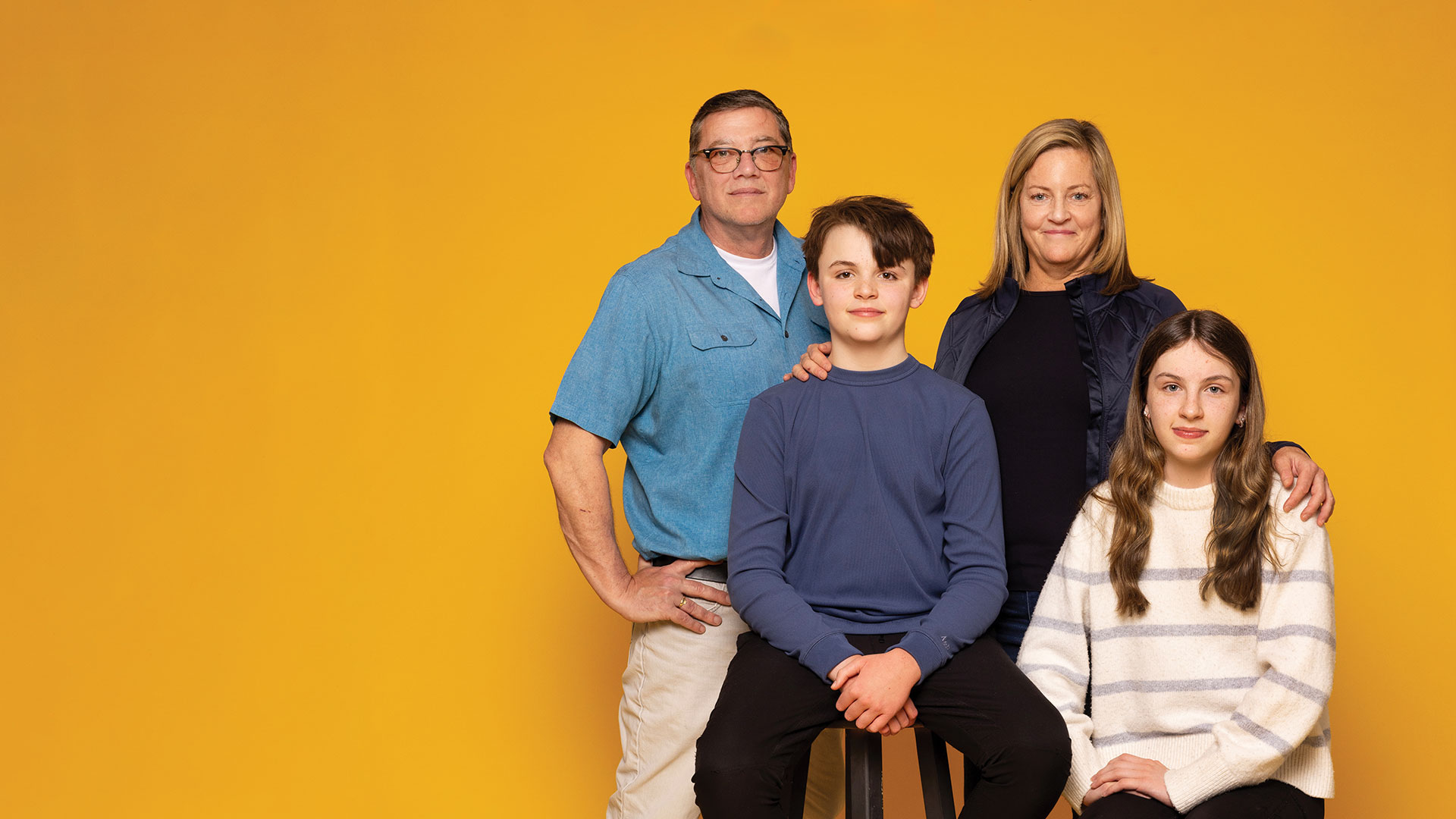
Exposure coach Tom Kelley, left, taught Jackson, Nicole, and Sydney Valliere to lead exposures themselves.
In Jackson’s mind, danger lurked everywhere. He stopped eating (save for ketchup packets and pasta), going to school, and even leaving his room. The sight of his sister sent him into a panic.
His school threatened to call the police over his absences. When his mother, Nicole Valliere, tried to drive Jackson to school, he jumped out of the moving car. He couldn’t explain why. He missed his entire fifth-grade year.
“Everyone in the house was crying,” Jackson says.
Valliere, a single mom, made the desperate decision to take a five-week absence from work so she could bring Jackson to PARC’s intensive program for daily treatment.
The intensive program owes its existence to PARC’s earliest research. In follow-up studies to its initial POTS trial, PARC researchers learned that children with severe OCD need more intensive exposure therapy, and family reinforcement is critical. In 2013, PARC launched the intensive program to put those findings into practice. Freeman and her colleagues built a budget and a business plan, hired more clinical staff, and moved to Bradley Hospital for more space. Even so, the program started with only a conference room.
But Freeman—the daughter of a law professor and an elder justice activist—learned tenacity at a young age, and has never backed down from a fight for the funding, publicity, and resources she needed to grow the center. “I’m not a big presence and don’t want to be,” Freeman says. “But PARC is my cause, and I have no trouble going toe-to-toe with anyone.”
Freeman’s fervor for PARC’s mission radiates among her staff—a confidence fueled, in part, by exposure therapy.
“There are parts of health care that can feel hopeless,” says Elizabeth Brannan, MD, an associate professor of psychiatry and human behavior and PARC’s intensive services lead. “But exposure therapy is such a hopeful treatment. We have kids coming to us whose entire lives are consumed by anxiety or OCD, and two to three months later, they’re going to school and living their lives again. The difference can be shocking.”
More than three-quarters of the severely sick kids in PARC’s intensive program respond to exposure-based treatment, which sometimes includes medication. Even then, the goal of a medication is typically to reduce a child’s distress so they can benefit from exposure therapy— the most durable “active ingredient” of their treatment.
Exposure therapy draws on the body’s natural capacity for habituation. Facing a fear is like jumping in cold water, Brannan says: uncomfortable at first, but tolerable with time. The trick of exposure is to find creative ways to help a child confront— and stay in—the feeling of anxiety until it abates. For someone with emetophobia, for example, an exposure could range from spelling “vomit” to watching a video of the act to facing a specific trigger.
From the start, exposures in PARC’s intensive program have been custom-designed and delivered by a team of psychiatrists, psychologists, and non-licensed exposure coaches working collaboratively.
“I’ve never been in a program where the doctors and clinicians give such importance to the things you say,” says Tom Kelley, an exposure coach. “If you came to our rounds, you’d have a hard time knowing who are the doctors and who are the coaches.”
In an experimental twist, the program started off providing not only daily therapy and group sessions at PARC, but also home visits by the exposure coaches. Freeman calls that team-based model—of doctoral clinicians supervising trained, non-licensed exposure practitioners who can go virtually anywhere—PARC’s most important innovation since its earliest trials, because it treats anxiety where it lives.
“It’s the difference between telling a ghost story in broad daylight and telling it at night,” says Kelley, who has led exposures for children in schools, churches, stores, graveyards, and beaches.
As Jackson’s coach, Kelley sat with him during the school day and practiced eating cheeseburgers with him at home at night. “You get enmeshed with these families,” he says.
Ultimately, the coaches teach families how to lead exposures themselves. “Tom turned us into exposure coaches,” Nicole Valliere says. “Sydney is part of it, and even my mom, who’s in her 70s. We’re all part of the solution.”
Freeman learned a magic word from Henrietta Leonard: “iterative.” The idea is that discoveries should be applied clinically and studied further, creating a continuous feedback loop.
The intensive program became PARC’s engine of iteration.
“The program was life-changing,” Freeman says. “It enabled us to treat a wider range of kids and do more research.”
It also inadvertently created a community of advocacy, with PARC at its center. While families bonded with their exposure coaches, they also started bonding with one another in the PARC waiting room. They started a parent support group and a PARC advisory group.
One of the parents’ first requests was for home visits to continue after the program’s end. Unfortunately, there was no billing code or evidence base for home visits on an outpatient basis. So in true iterative fashion, Freeman wrote a grant.
The resulting five-year IMPACT study—the largest single-site clinical trial for youth with anxiety or OCD—is just completing its investigation of office-based versus team-based outpatient care with input from a steering committee of patients, families, advocates, payers, and hospital leadership.
“After every one of these partner meetings, we’ve thought about things in a different way,” Freeman says. “They remind us how much we don’t know.”
Midway through the study, the pandemic struck, breaking the dam on a building crisis in children’s mental health. Youth anxiety and depression doubled, while worker shortages hit health care.
To Freeman, the team-based model was now not just an innovation, but an imperative: Non-licensed exposure coaches could radically expand access to exposure therapy when and where it was needed most.
This past fall, PARC was awarded a $11 million grant to extend the reach of the team-based model even further—this time, testing it in community-based health care settings across Rhode Island, which serve more racially and socioeconomically diverse populations. The findings, they hope, will justify insurance coverage for home visits.
“We need to be going outside the safety of our academic medical setting and doing everything we can to treat everybody,” Freeman says.
In many ways, exposure therapy is like CPR: low-tech, lifesaving, and something anyone can do. But fundamentals are key.
When Kristen Benito, PhD, an associate professor of psychiatry and human behavior (research), started training therapists and coaches in exposure therapy, they often asked how to make the right choices. Treatment manuals typically instructed therapists to “do exposure” without elaboration. Oftentimes, practitioners used conflicting terminology to describe what they were doing.
So she set out to answer an existential question: What is exposure therapy, exactly?
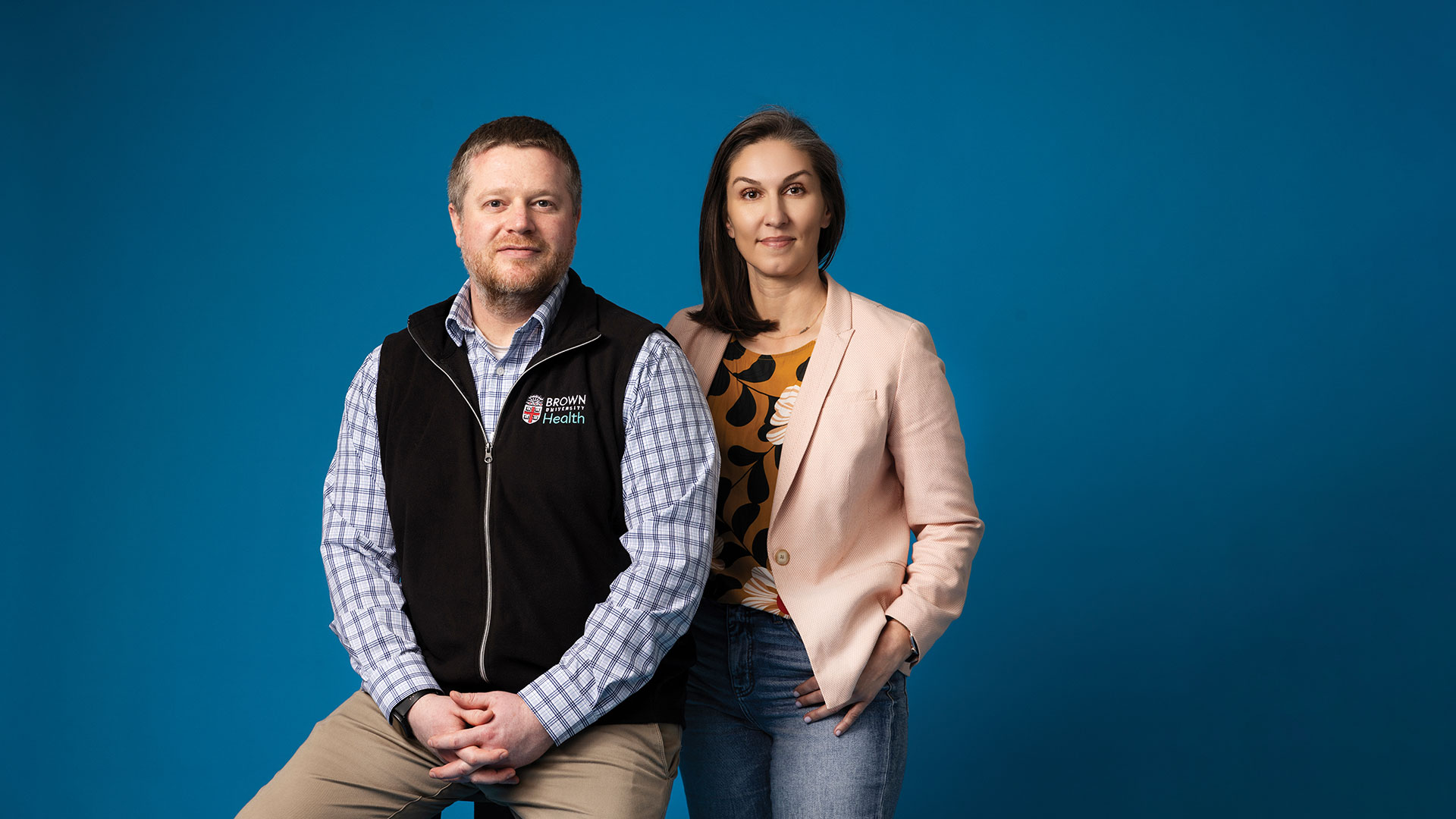
Joshua Kemp and Kristen Benito train practitioners in exposure therapy—by using exposure therapy.
Benito, who now oversees PARC’s research and quality improvement, watched countless hours of video of exposure sessions from PARC’s early clinical trials to identify the key parts to a successful exposure. Chief among them, she found, was that practitioners must encourage children to approach their fears without reassurance or help from rituals.
“It feels counterintuitive,” Benito says. “People don’t go into therapy to make kids more anxious.”
Based on her findings, Benito developed an exposure guide—a brief worksheet that helps people use the necessary elements of exposure—and validated its effectiveness. PARC now had a powerful training tool for its therapists, coaches, and parents. But it set its sights higher.
“We want kids across the country to have access to high-quality exposure-based treatment,” says Jennifer Herren, PhD, PARC’s associate director and an associate professor of psychiatry and human behavior, clinician educator. “We’ve got to get out there and start training more people.”
They faced a practical problem, though. Research shows that despite exposure therapy’s success, half of therapists trained in exposure never use it. Quite simply, they fear putting children in distress.
PARC researcher Joshua Kemp, PhD, an assistant professor of psychiatry and human behavior (research), found a solution in plain sight. The treatment for therapist anxiety was the same as for patient anxiety: exposure therapy. In other words, therapists needed exposure to exposure. Kemp found that helping therapists role-play worst-case scenarios dissipated their fears, making them more likely to use exposure.
Based on this wealth of homegrown research, PARC has developed a training protocol that incorporates the exposure guide, as well as exposure-to-exposure scenarios. All told, PARC has now trained more than 450 providers, including Brown trainees and therapists throughout New England.
Now PARC’s researchers are harnessing technology as they extend the scope of their training. Benito is investigating whether artificial intelligence can be used to provide similar clinical feedback as the exposure guide, while Kemp has built a virtual reality training program to enhance exposure-to-exposure training. Pending NIH funds, PARC plans to package this virtual reality training, along with the exposure guide, into an asynchronous e-learning format that can be disseminated nationwide.
That scalable impact represents the culmination of decades of iterative braiding of all PARC’s strands of work.
“We’re providing clinical care for children with all forms and degrees of anxiety and OCD, conducting grant-funded research to innovate and expand access to treatments, training more people to provide those treatments, and doing it all well,” says Brannan, the intensive services lead. “To me, that’s how you do this if you are truly mission-driven.”

Jennifer Herren and Elizabeth Brannan want to expand access to exposure therapy.
This past fall, hundreds of former PARC patients and their families arrived in a driving rain at a gymnasium at Bradley Hospital. Inside, kids got their faces painted and posed with staff in a photo booth. Some painted in the art room or ducked outside to grab orders from food trucks. Two kids waddled through the crowd in giant inflatable shark costumes. A pair of teens flirted awkwardly in a hallway.
This is the annual PARC reunion.
Each year since a father first suggested the idea in 2014, families have returned to Bradley to reunite with each other and their care team.
“It’s unheard of for people to want to return to the place where they received psychiatric care,” Freeman says. “This is one of the more stigma-fighting things we can do.”
The PARC team donates their time to fundraising, organizing, and staffing the reunion—from DJing to volunteering to sitting in a dunk tank. To Freeman, that group effort is a reflection of how PARC was built.
“All of us, person after person, built on the stage Henrietta set to get to where we are now,” she says. “This is everybody.”
At the reunion, Freeman presented PARC’s latest breakthroughs to the families. This year, they included the first-ever study of transcranial magnetic stimulation—a non-invasive way to activate parts of the brain with magnets (see page 9)—for youth OCD. PARC researchers hope that TMS can recalibrate a brain imbalance associated with OCD to help the hardest-to-treat patients benefit from exposure therapy.
In the crowd listening to Freeman’s presentation were the Valliere family; Jackson sported a freshly painted football on his face. Just a day earlier, someone had vomited at his school. He asked a teacher to get Sydney, his former trigger, who helped him calm down and breathe. He stayed at school that day—just as he had his entire sixth-grade year.
“PARC saved our lives,” Nicole Valliere says. “It saved all of us.”
At the reunion, Tom Kelley could hardly keep up with families wanting to hug him and say hello.
“We show the kids what to do, but they do the real work,” Kelley says. “They’re going down the scariest roads in their lives.”
With treatment, those roads can lead to unimagined places. The reunion’s keynote speaker, Annie Rogers, 23, had, like Jackson, suffered from emetophobia and worked through exposures with Kelley. Today, she lives in Boston, working for a nonprofit and volunteering with senior citizens.
Rogers still fears getting sick on public transportation, but now, more often than not, she knows what to do. Recently, she flew by herself to meet her newborn nephew, a feat her 12-year-old self would have called impossible.
Looking out over the crowd of children and parents, Rogers shared the advice she would have given that scared 12-year-old. It is also the clearest articulation of why PARC takes on all that it does: “You have always been worth the work.”

